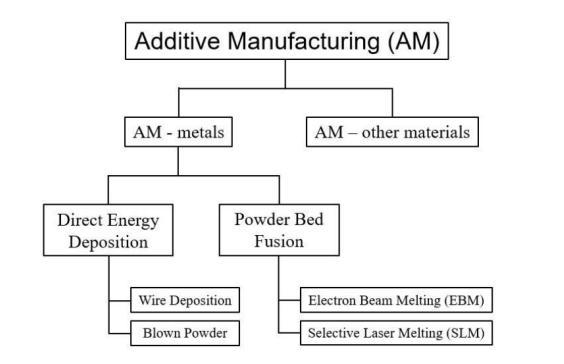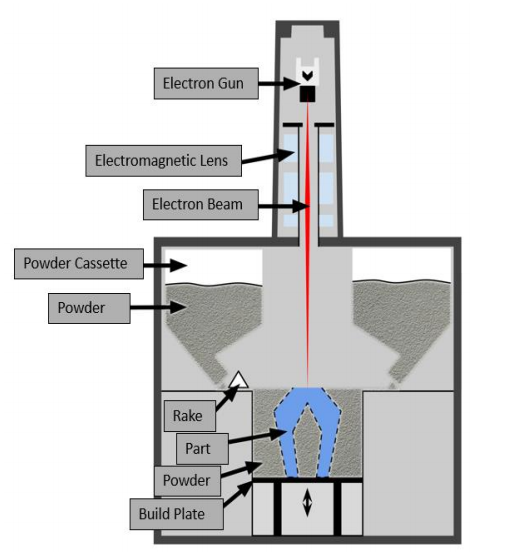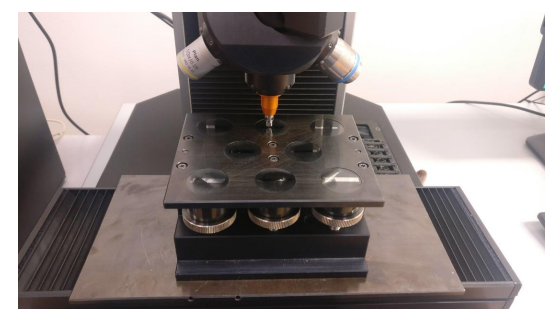Karthik Vaidyalingam Arumugam recently presented a thesis, ‘Effect of Process Parameters on Contour Properties in Inconel 718 Structures Fabricated by Electron Beam Melting’ to Linköping University, expanding further on additive manufacturing with metal.
Nickel alloy Inconel 718 was used to create samples for analysis, as researchers examined the effects of process parameters on contour properties in Inconel 718 (IN718) structures fabricated via EBM. Inconel 718 offers a higher Fe, Mo and Nb content with lower Ti and Al wt% than other Ni-based alloys, offering better strength, corrosion resistance, good weldability, and crack resistance.
The EBM process encompasses a variety of build parameters that can be optimized regarding features like the following:
- Beam current
- Speed
- Focus offset
- Scan sequence
- Build temperature
Variations allow for better control parameters like melt pool size, depth of powder melting, and more.
Powder is critical to the quality of a part, beginning with characteristics like:
- Size distribution
- Chemical composition
- Morphology
- Flowability
- Density
“These characteristics result in a mixture of measures based on both theoretical and empirical-based methods,” stated the researchers. “It is essential for the powder to have good flowability, as it directly affects the density of the part. A large powder size density (PSD) will lead to poor flowability and a small PSD will lead to poor packing density.”
Samples for the study were 3D printed at University West on an Arcam A2X EBM machine. Three build parameters were varied during the project, including voltage, focus offset, and speed in printing.
Thirty-four samples were created overall. Two samples were fabricated with standard parameters and 5mm thickness. The others were 3D printed using 16 different build parameters, with thicknesses varying from 3mm to 5mm. Samples were cut along the build direction, and at mid-width of the tensile bar at an offset of 1-2mm.
“A moderate cutting rate was utilized, and adequate coolant was provided to ensure the samples did not overheat and to maintain a straight cutting line,” explained the researchers.
After hot mounting and grinding of any sharp edges, samples were polished and then hardness tests were performed, with microstructural investigation following.
“The presence of large lack of fusions and surface defects may have significantly affected the hardness values in case of some samples. Placement of the hardness indents at locations near pores could have resulted in reading that were not exactly accurate. While a series of indents were made to determine the average hardness, it could still prove to be only near optimal readings and not exact. The possible effects of γ” in the microstructure cannot be determined by the experiments carried out in this thesis. This is due to the limitations of the scanning electron microscope,” concluded the researchers.
“Finally, the nature and formation of the grain sizes have been compared for various process parameter. The pictures of grain structure obtained from the light optical microscope for each sample may vary due to factors such as quality of surface finish, etching parameters such as voltage and duration and lastly the light optical microscope parameters. The magnification and quality of images could have affected the comparison and study of the grain structures during the project. While care was taken to avoid all sources of errors, it is not possible to completely remove them.
Researchers today are involved in a wide variety of projects involving electron beam melting processes (EBM) for use with materials like tungsten, in applications like orthopedics, and in relation to biocompatibility. What do you think of this news? Let us know your thoughts! Join the discussion of this and other 3D printing topics at 3DPrintBoard.com.
[Source / Images: ‘Effect of Process Parameters on Contour Properties in Inconel 718 Structures Fabricated by Electron Beam Melting’]Subscribe to Our Email Newsletter
Stay up-to-date on all the latest news from the 3D printing industry and receive information and offers from third party vendors.
Print Services
Upload your 3D Models and get them printed quickly and efficiently.
You May Also Like
Reinventing Reindustrialization: Why NAVWAR Project Manager Spencer Koroly Invented a Made-in-America 3D Printer
It has become virtually impossible to regularly follow additive manufacturing (AM) industry news and not stumble across the term “defense industrial base” (DIB), a concept encompassing all the many diverse...
Inside The Barnes Global Advisors’ Vision for a Stronger AM Ecosystem
As additive manufacturing (AM) continues to revolutionize the industrial landscape, Pittsburgh-based consultancy The Barnes Global Advisors (TBGA) is helping shape what that future looks like. As the largest independent AM...
Ruggedized: How USMC Innovation Officer Matt Pine Navigates 3D Printing in the Military
Disclaimer: Matt Pine’s views are not the views of the Department of Defense nor the U.S. Marine Corps Throughout this decade thus far, the military’s adoption of additive manufacturing (AM)...
U.S. Congress Calls Out 3D Printing in Proposal for Commercial Reserve Manufacturing Network
Last week, the U.S. House of Representatives’ Appropriations Committee moved the FY 2026 defense bill forward to the House floor. Included in the legislation is a $131 million proposal for...








































